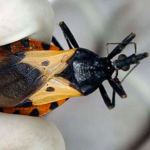Article:
In a recent study conducted by researchers at the University of Illinois at Urbana-Champaign, a surprising finding emerged regarding the susceptibility of leafy greens to E. coli contamination. While refrigeration may help prevent E. coli contamination in lettuce, it appears to have little effect on kale and collards, commonly used in dishes like saag.
E. coli, or Escherichia coli, a bacterium species found in the lower intestines of humans, can occasionally cause food contamination and lead to food poisoning. To understand the differences in susceptibility among various leafy greens, researchers infected whole leaves from romaine lettuce, green-leaf lettuce, spinach, kale, and collards with E. coli and observed their response to different storage temperatures.
Their findings, published in the journal ‘Food Microbiology’, revealed that temperature and leaf surface properties play significant roles in governing susceptibility to bacterial contamination. At room temperature or higher, E. coli thrives on lettuce, but refrigeration at 4 degrees Celsius leads to a sharp decline in E. coli population. However, for waxy greens like kale and collard, refrigeration can actually prolong the survival of E. coli.
Lead author Mengyi Dong, a doctoral student in the Department of Food Science and Human Nutrition, explained, “On these vegetables, E. coli grows slower under warmer temperatures, but if it is already present, it can survive longer under refrigeration.”
Despite being less susceptible to E. coli contamination overall, rinsing lettuce does not completely remove the bacteria due to its tight attachment to the leaf surface. Additionally, when leaves are cut, they release vegetable juice, providing nutrients that stimulate bacterial growth. However, spinach, kale, and collard juice exhibit antimicrobial properties that protect against E. coli.
The researchers isolated juice from kale and collards and found it to be effective as a natural antimicrobial agent when applied to lettuce leaves. This discovery holds potential for developing antimicrobial sprays or coatings to control foodborne pathogen contaminations both before and after harvest.
However, the researchers emphasized that the findings should not discourage people from consuming fresh fruits and vegetables. While pathogens in food cannot be completely avoided, following food safety guidelines, thorough washing of lettuce, and proper refrigeration are essential steps in minimizing the risk of contamination.











